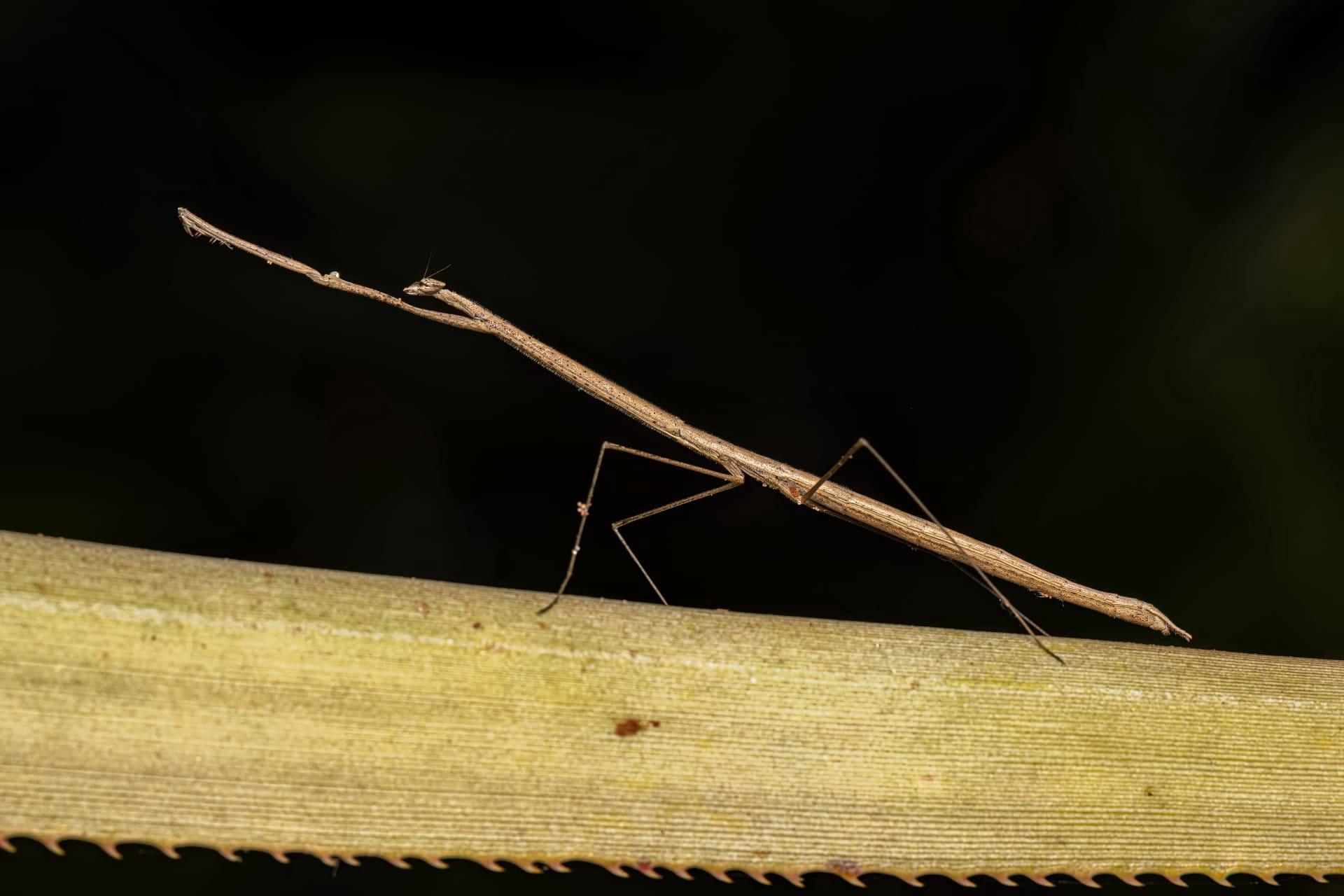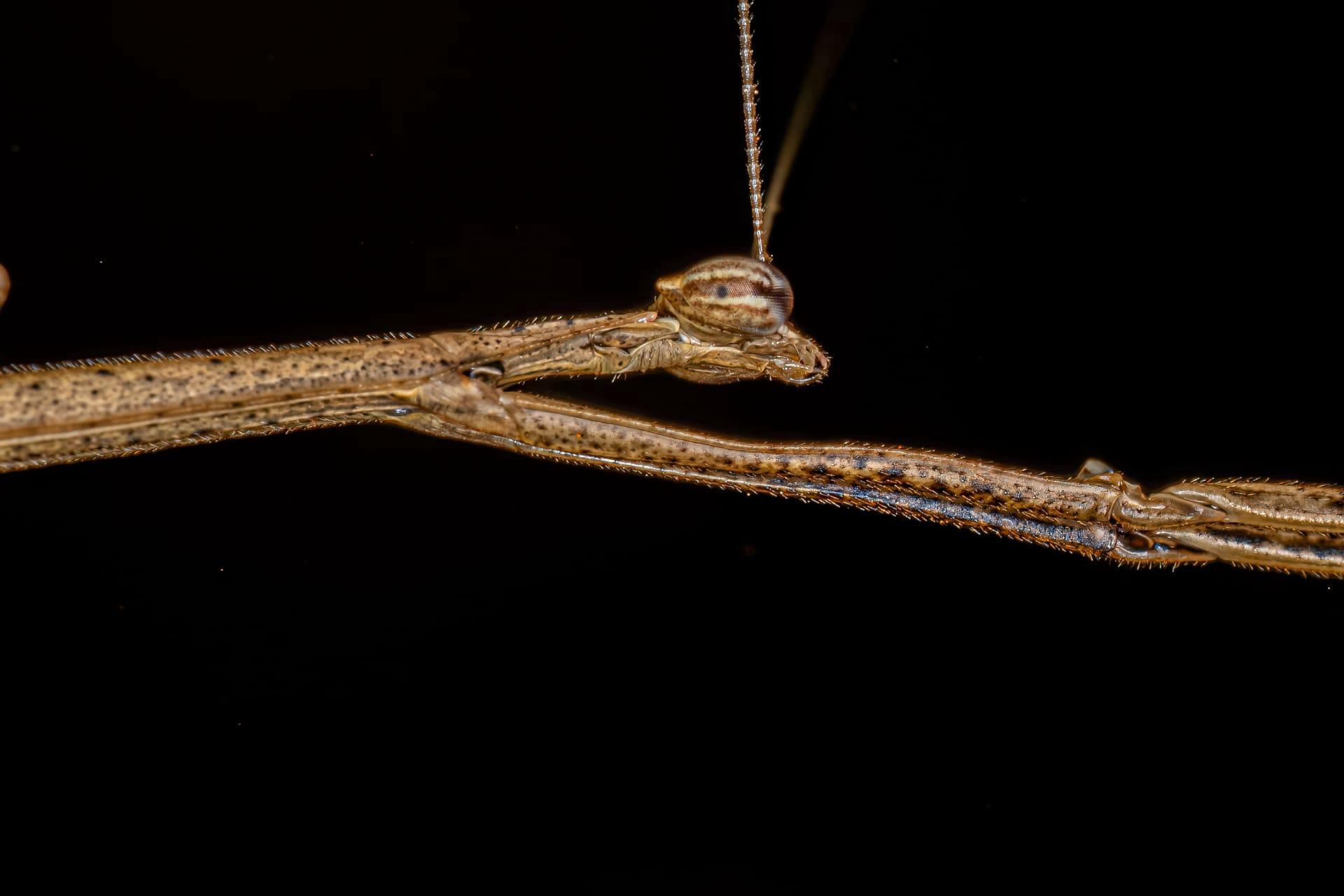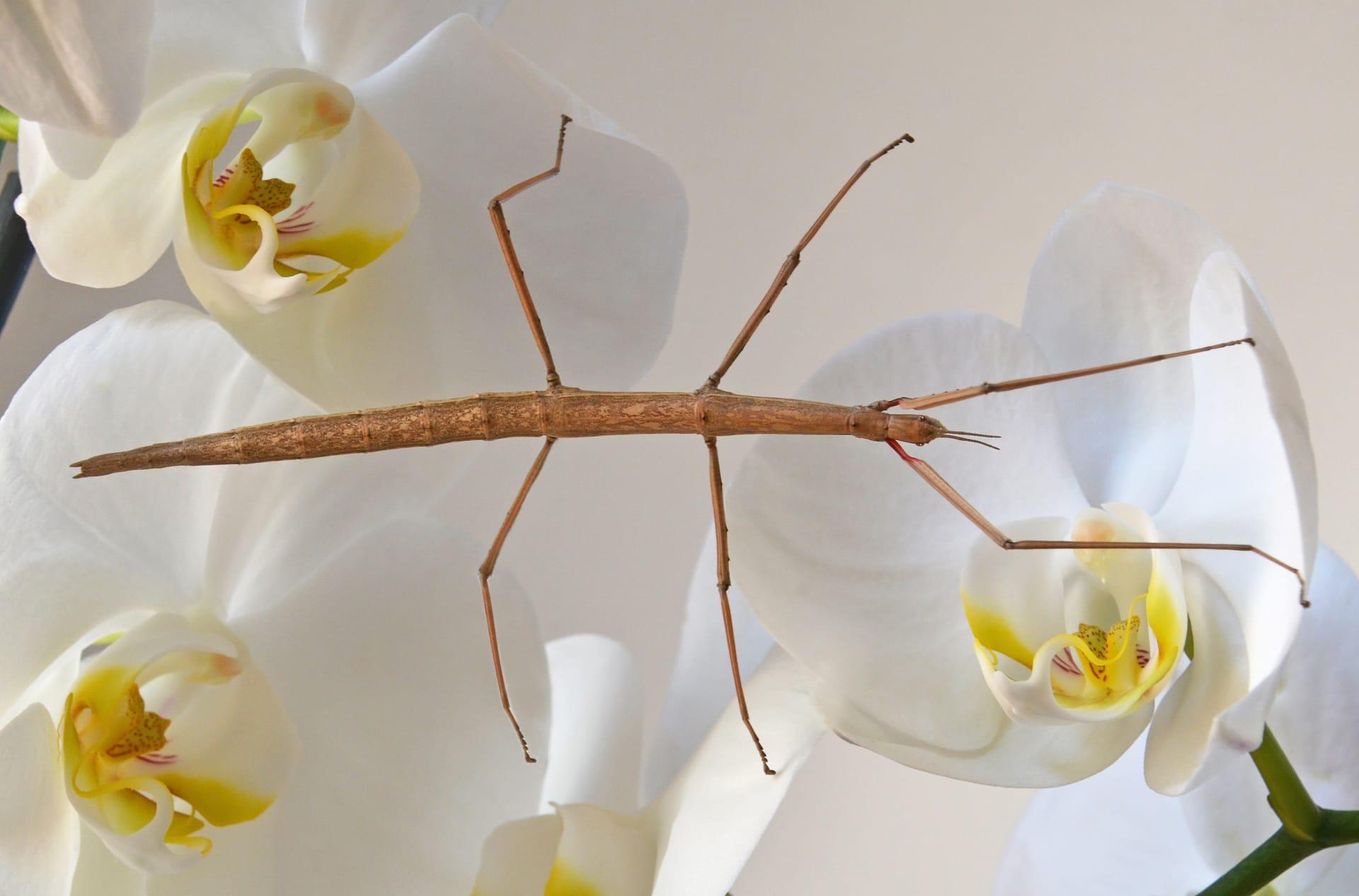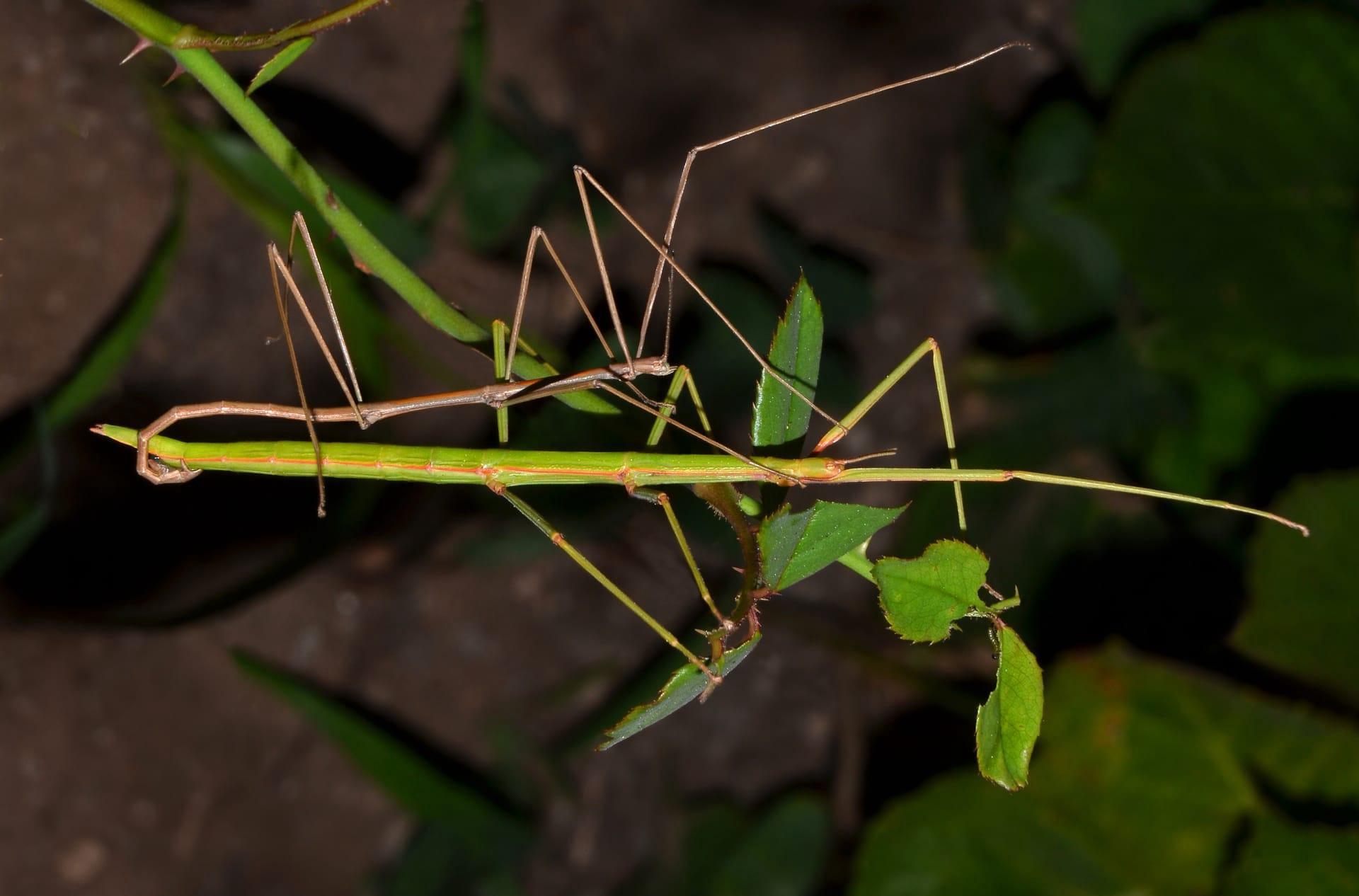Stick Bug Characteristics
- Home /
- Mini Encyclopedia /
- Animal /
- Stick Bug Characteristics
1
Stick bug, a master of camouflage in the insect realm! These fascinating creatures, known scientifically as Phasmatodea, boast an impressive range of body sizes. Typically, they measure from a mere 1.2 inches (about 3 cm) to a whopping 22 inches (about 56 cm) in length, depending on the species. Lifespan wise, stick bugs usually enjoy a life of about 1 to 2 years, though this can vary based on environmental conditions.
One of the most remarkable features of stick bugs is their ability to regenerate lost limbs, a process known as autotomy. This incredible survival strategy allows them to escape predators by sacrificing a leg, which can later regrow during their molting process. This unique ability not only highlights their resilience but also their adaptability in the wild, making them a subject of great interest in the study of regenerative biology.

2
Question: What do stick bugs eat and how do they find their food?
Answer: Stick bugs are primarily herbivores, feeding on the leaves of plants. Their diet mainly consists of leaves from trees like oak and eucalyptus, as well as from shrubs and vines. To find their food, they rely on their strong sense of smell and touch, as their vision is not their strongest suit. They are nocturnal feeders, meaning they do most of their eating at night, which further aids in their camouflage, as they blend seamlessly with the plants they feed on.

3
When it comes to movement, stick bugs are slow and methodical, perfectly mimicking the gentle swaying of twigs and branches. This slow-motion lifestyle is a key part of their camouflage strategy, making them almost indistinguishable from the plants they inhabit. Some species can even rock back and forth, simulating the movement of foliage in the breeze.
In terms of eating habits, stick bugs are exclusive leaf-eaters. They have sharp mandibles that allow them to chew through tough plant material. Their feeding is mostly done at night, aligning with their nocturnal nature. They can consume a significant amount of leaves, given their size, and prefer the fresh, tender leaves of host plants, often eating from the same plant for several days.

4
Stick bugs thrive in a variety of environments, ranging from tropical rainforests to temperate woodlands. They are primarily found in South Asia, Southeast Asia, and Australia, with some species inhabiting parts of the southern United States and Europe. These insects favor humid and warm conditions, where vegetation is abundant and they can blend in seamlessly.
Reproduction in stick bugs is quite fascinating. Many species are capable of parthenogenesis, where females can reproduce without mating with a male. This results in offspring that are genetically identical to the mother. In species where mating occurs, the male often climbs onto the female and can remain there for days to ensure successful fertilization. Eggs are laid individually and resemble seeds, adding another layer to their camouflage skills.

5
Book: "The Hidden Life of Stick Bugs: Masters of Disguise" by Dr. Jane Green, published in the UK in 2018. This engaging book delves into the secretive world of stick bugs, exploring their unique camouflage techniques, feeding habits, and reproductive strategies. Dr. Green, an entomologist, combines scientific facts with fascinating anecdotes, making it a great read for both enthusiasts and casual readers.
Book: "Walking Twigs: The Amazing World of Stick Bugs" by Michael Andrews, released in the United States in 2020. Andrews, a wildlife photographer, presents a stunning visual journey into the life of stick bugs. The book includes detailed photographs, insights into their behavior, and commentary on their significance in ecosystems. It's an eye-opening exploration of these remarkable insects, showcasing their beauty and the importance of their conservation.